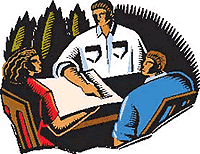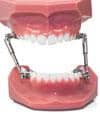With Elizabeth M. Barrett

OP: What is the most important role of the front-office staff in a transition?
Barrett: The role of the administrative staff in a transition is an enhanced version of what they do every day: relationship building. They are the first contact the patients have with the office and, as such, when a new orthodontist comes on board, the administrative staff will be integrating this new “persona” into their presentation of the practice.
The following list represents some of the ways that the administrative team will be involved in the transition:
Review and revise—if necessary—the scheduling template so that the new orthodontist can ease into the system and build a good rapport with patients and staff.
Discuss “scripting” to field questions about the incoming orthodontist. Staff should familiarize themselves with his/her background, credentials, education, and experience. Scripting is essential to avoid awkward implications that one orthodontist should be preferred over the other. Patients should be able to feel the confidence that the administrative staff conveys about the incoming orthodontist’s presence and abilities.
In our practice, it was important to make certain that the schedule was designed for two orthodontists working together so that patients could be seen by either orthodontist during treatment. This system correlates with our internal communication and treatment-planning standard.
The administrative team can become an integral part of the “marketing phase” of a transition. Set up announcements in various local media and, most importantly, set some time aside to talk with the administrative teams in referring offices. The office managers may want to introduce the orthodontist at a luncheon with staff or schedule time for the incoming orthodontist to go out and meet with referring doctors and staff. Finally, the administrative team is very aware of all the forms, stationery items, and signage for the practice that will have to change, and they can start making lists of items early in the transition process that will have to be updated—even creating “proofs” to have ready when the transition is completed. This is not a task to be left to the last minute; I think most people would be amazed at how many items have to be revised to reflect a new orthodontist coming in to the practice.
OP: What is the most important role of the clinical staff in a transition?
Barrett: The clinical team members, like the administrative team, will be the liaisons between the orthodontists and the patients. Patients often get a “read” on how things are going from the demeanor of the staff members. Therefore, it is critical that the clinical assistants avoid making comparisons about the two orthodontists. Staff must keep an open mind and, of course, maintain professional decorum at all times.

Have meetings to discuss differences in techniques so that, together, the orthodontists and staff can find ways to integrate the techniques and skills of the new orthodontist into the existing systems of the practice and the training protocols for the practice. It may be helpful to develop a training time line that would help the orthodontists and staff identify critical procedures that need to be standardized for better efficiency and effective patient care.
Remember, any time someone new comes into a team environment, the existing dynamic of the team changes. I personally don’t think that most orthodontists coming into an established practice want to shake things up, but they would like to be respected for what they do bring into the dynamic. Staff may be pleasantly surprised by the change. It is highly probable that the clinical staff may learn some new technique from the incoming orthodontist or, better yet, be appreciated for teaching the incoming orthodontist some of the techniques and systems in use.
Elizabeth M. Barrett is the practice administrator for David R. Musich, DDS, and Matthew J. Busch, DDS, Ltd. She spoke on the topic of transitions at the 2007 AAO Annual Session. She can be reached at
This is Part 1 of a two-part interview. Part 2 will appear in the October issue.










